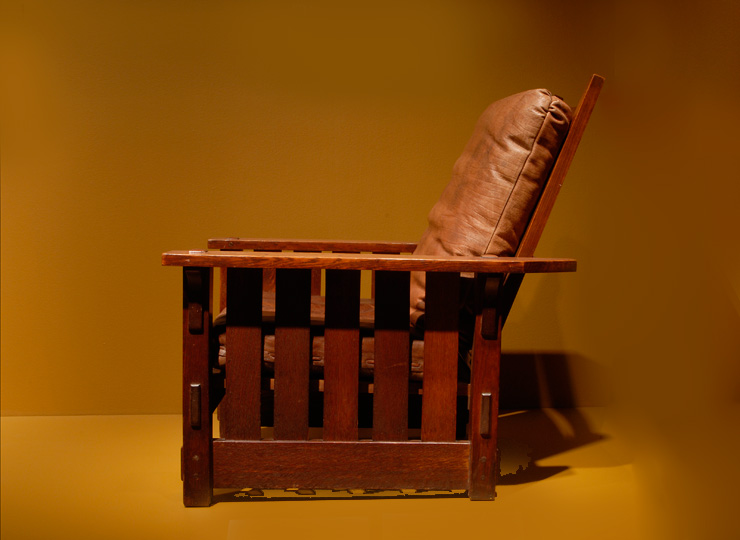
This style was massive to excess, it gave the impression of inertia, and was well capable of provoking a disinclination to move and to think in the minds of those subjected to its influence. In its effort to reveal structure, to be frank and simple in expression, it allowed one member to pierce another almost fiercely and permitted an aggressive display of stout wooden pins, which made ungraceful projections along the course of its uprights. Furthermore, regarded as a whole, this style carried the impersonal quality to an extreme. It suggested no descent from preceding types and pointed toward no probable developments in the future. It had an irritating finality.
—Irene Sargent, 1926
![]()
Irene Sargent initially worked side-by-side with Gustav Stickley, one of the nation’s most famous furniture producers whose magazine, The Craftsman, brought the Arts and Crafts, or Mission, style to bungalow houses all over America. Sargent praised furniture like the chair seen here for its honest construction and simple elegance. Advocates found beauty in this style because it seemed purely functional rather than decorative, and because it made use of healthy, natural materials like oak, rush grass, and leather. Twenty years later, however, Sargent turned her back on Stickley and the Arts and Crafts style. It now appeared “massive to excess” and the visible construction no longer seemed honest but “aggressive” and “ungraceful.” Sargent also criticized its “irritating finality.” Stickley and other furniture designers in the Arts and Crafts Movement believed that by reducing ornament and eliminating unnecessary parts they could create a universal style detached from national ties and historical traditions. By the 1920s, this somewhat self-righteous quest for a single perfect “look” had faded in the light of other Modernist styles.